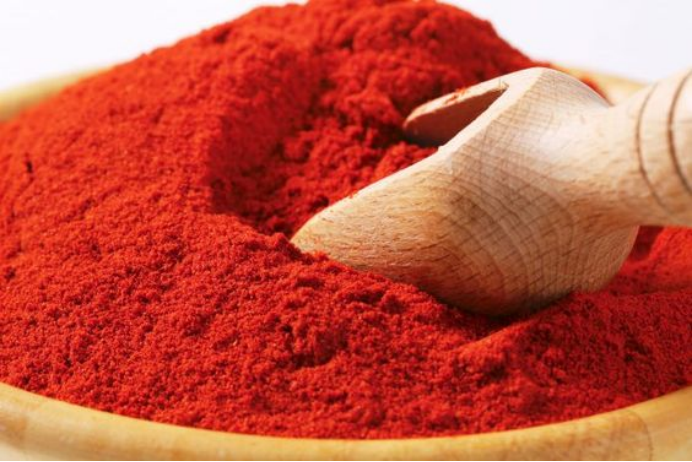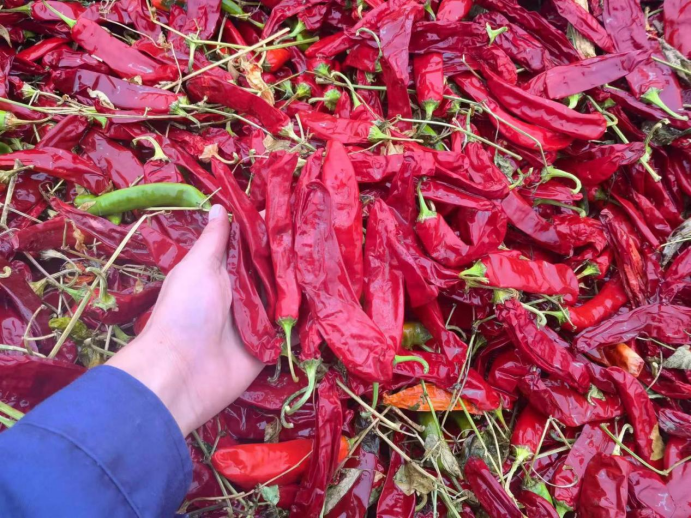- No. 268 Xianghe Street, Sebaka sa Ntšetso-pele ea Moruo motseng oa Xingtai, Hebei 054001 Chaena
- Byron@hbhongri.cn
Paprika ke eng
Paprika ke a senoko made from dried and ground red peppers. It is traditionally made from Litapole mefuta e fapaneng ea Longum sehlopha, ho kenyeletsa pepere ea chili. Paprika e ka ba le maemo a fapaneng mocheso, empa pepere e sebelisoang bakeng sa paprika e chesang e atisa ho ba bobebe 'me e na le nama e tšesaane ho feta e neng e etsoa pele. phofo ea chili. In some languages, but not English, the word paprika e boetse e bua ka semela le litholoana tseo linoko li entsoeng ka tsona, hammoho le pelepele ho Grossum. sehlopha (mohlala, pepere ea tšepe).

Mefuta eohle ea capsicum e tsoa ho baholo-holo ba hlaha ho amerika e leboea, ka ho khetheha Mexico Bohareng, where they have been cultivated for centuries. The peppers were subsequently introduced to the Lefatše la Khale, ha ho tlisoa pelepele ho Spain lekholong la bo16 la lilemo. Setlolo se sebelisetsoa ho eketsa tatso le mebala ho mefuta e mengata ea lijana ka mefuta e fapaneng ea lijo.

Khoebo ea paprika e ile ea atolosoa ho tloha ho Hloahloeng ea Iberia ho Afrika le Asia[6]: 8 and ultimately reached Europe Bohareng ka Balkans, eo ka nako eo e neng e le tlas'a Ottoman busa. Sena se thusa ho hlalosa Seserbo-Croatian tšimoloho ea lentsoe la Senyesemane.
Ho Sepanish, paprika e se e tsejoa e le pimentón ho tloha lekholong la bo16 la lilemo, ha e fetoha motsoako o tloaelehileng lijong tsa bophirimela Estremadura.Ho sa tsotellehe ho ba teng ha eona Europe Bohareng ho tloha qalong ea tlhōlo ea Ottoman, ha ea ka ea tsebahala ka Hungary until the late 19th century. Now, more than 70% paprika are planted and harvested from China origin.

Paprika can range from mild to hot – the flavor also varies from country to country – but almost all plants grown produce the sweet variety. Sweet paprika is mostly composed of the pericarp, ho tlositsoe peō e fetang halofo, athe paprika e chesang e na le lipeo, mahlaka, mahe, le likhalase. The red, orange or yellow color of paprika is due to its content of carotenoids.
-
Capsicum frutescens oleoresin – High Purity, Food GradeLitabaNov.17,2025
-
Capsicum Frutescens Oleoresin – Natural Heat & FlavorLitabaNov.17,2025
-
Peppereka Powder – Fresh, Vibrant Color & Sweet AromaLitabaNov.17,2025
-
Paprika Oleoresin | Natural Red Color, Heat & Flavor BoostLitabaNov.17,2025
-
Pure Turmeric Extract 95% Curcumin | Potent, Lab-TestedLitabaNov.17,2025
-
Red Papper Pods – Premium Sun-Dried, Bold Heat & AromaLitabaNov.10,2025







